Other Plants of the Giant Sequoia Forest
Plants usually live
as members of a community, just like you are part of your
neighborhood and school community. Giant sequoias do not live
all by themselves in the forest. They are members of the 'Sierra
Mixed Conifer Forest Community.' On this page you will learn
about columbine, dogwood, white
fir, California hazelnut, incense
cedar, and pinedrops.
Click on any
photo to see an enlargement.
Columbine
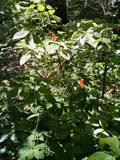 Columbine is a very common plant in
the redwood forest. Its flowers are red and yellow, and they grow
from 6 to 30 inches high. Look for them in the summer, when you
will find them growing in moist shady places such as creek banks
or near seeps in the ground.
Columbine is a very common plant in
the redwood forest. Its flowers are red and yellow, and they grow
from 6 to 30 inches high. Look for them in the summer, when you
will find them growing in moist shady places such as creek banks
or near seeps in the ground.
top
Pacific Dogwood
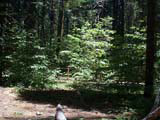
Dogwood is another plant that
is often found growing among the giant sequoias. As you can see,
it looks more like a bush than a tree. Dogwood plants are deciduous because they drop their leaves in
the winter. In the fall, their leaves turn bright red. By the
spring, dogwoods have beautiful, large white blooms.
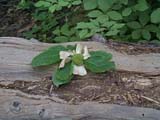 Here is a close up of a dogwood fruit. You can see
the dried flower still clinging to the stem.
Here is a close up of a dogwood fruit. You can see
the dried flower still clinging to the stem.
top
White Fir
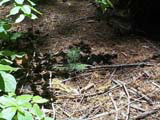 Here is a young white fir seedling.
Trees such as white firs are called 'conifers' because their seeds
are held in cones. White firs grow quickly in the redwood forest,
where they grow well in very shady places.
Here is a young white fir seedling.
Trees such as white firs are called 'conifers' because their seeds
are held in cones. White firs grow quickly in the redwood forest,
where they grow well in very shady places.
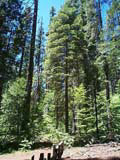 Here is a mature white fir. Notice
how its branches spread horizontally (sideways).
Here is a mature white fir. Notice
how its branches spread horizontally (sideways).
top
California
Hazelnut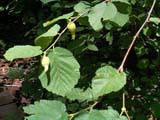
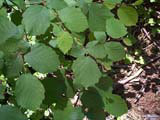
Another bushy plant growing
in the giant sequoia forest is the California hazelnut. The photo
on the left shows the large oval leaves of the plant, and the
photo on the right shows a young hazelnut fruit.
top
Incense Cedar
Incense cedar is a tree sometimes
found growing among giant sequoias on slopes or canyons. It is
different from pine trees because it has scale-like leaves instead
of the needle-like, prickly leaves of pines. You can also tell
an incense cedar from its wonderful, strong smell!
top
 Pinedrops
Pinedrops
Pinedrops is an interesting
plant. It is parasitic, which means it is totally dependent
on other plants to live. This is a photo of two flower stalks.
Look at it closely. Does it look like other flowers you know?
(Probably not!) Pinedrops grows on the roots of other plants.
top

Take the Quiz!
Introduction
Parts of A Giant
Sequoia
Life Cycle of
A Giant Sequoia
Fire Resistance
Glossary
Take the Quiz!
Try the Word
Search!
top
 Columbine is a very common plant in
the redwood forest. Its flowers are red and yellow, and they grow
from 6 to 30 inches high. Look for them in the summer, when you
will find them growing in moist shady places such as creek banks
or near seeps in the ground.
Columbine is a very common plant in
the redwood forest. Its flowers are red and yellow, and they grow
from 6 to 30 inches high. Look for them in the summer, when you
will find them growing in moist shady places such as creek banks
or near seeps in the ground.







